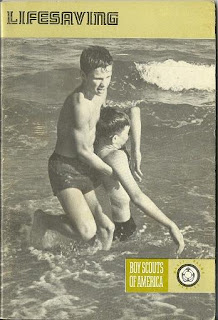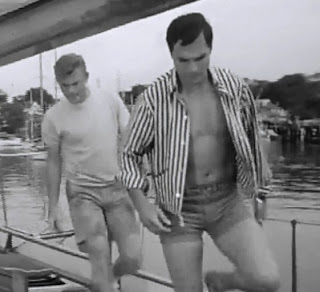During my sophomore year in college, my class in Science Fiction was assigned Ursula K. Leguin's The Left Hand of Darkness (1968). I already knew Leguin from The Lathe of Heaven (1971), which has a gay vague protagonist, so I expected significant buddy-bonding. Instead I found homophobia.
A human emissary is investigating the planet Winter, occupied by a hermaphrodite species. They have no external sex organs until they’re in the process of having sex, at which point either male or female organs protrude. The protrusions are random, so someone might be male tonight and female tomorrow, but they almost always mirror one’s partner: male organs protrude with female, female with male. Leguin notes that on those rare occasions when the same sets of organs protrude, the partners halt the sexual congress and shrink back from each other in horror. Even in 1980, I found such a statement odd. If the alien thinks nothing whatever about sometimes being male and sometimes female, what would be the horror of male-male or female-female contact? I found homophobia embedded in a book touted as an amazing feminist manifesto immensely puzzling.
Eventually during the semester I picked up a few other novels, all from the “Hainish” cycle. Though her works bear some resemblance to those of Marion Zimmer Bradley, they almost entirely eliminate gay content.
In Rocannon’s World (1966), emissary Rocannon is the sole survivor of an enemy attack, and must cross the feudal planet Fomalhaut to get help. En route he gathers several companions, including Kyo, a member of a slight, slender, elvish race called the Fiann. They ride together on a flying catlike creature, talk softly into the night, and touch each others’ shoulders (the touching of shoulders occurs a lot with authors too homophobic to describe a same-sex kiss).
During a tribal celebration, they develop an affection that sounds very much like romantic love: “Rocannon sat drunk and contented, riding the river of song, feeling himself now committed [to this world.] Beside him now and then he sensed the presence of the little Fiann, smiling, alien, serene.” Rocannon is never rescued, so there is no reason whatever for the two to part company, but they do: “between [them] a pattern had come to an end,” LeGuin tells us, “leaving quietness” (92). She offers no more details, because she has none to offer: relationships between men are by definition transient. Eventually Rocannon marries a woman.
In City of Illusions (1967), an emissary named Falk finds himself lost, naked and without memories, in the wilds of a barbaric Earth. He marries a Terran woman, and LeGuin gives us ample passages of them kissing, cuddling, and deriving “infinite comfort” in each other’s arms. Years later, Falk goes off in search of the rest of his expedition. He reaches a city occupied by the evil, decadent Shing , an alien species that dresses in garish “transvestite” robes (a detail meant to make readers shudder with dread), and meets the only other survivor, Orry, who was just a child when they crashed.
LeGuin makes Orry only sixteen years old, frail, childish, passive, weak, addicted to garish colors and intoxicants: a gay stereotype. He has grown up starving for human affection. He gazes at Falk “yearning and feebly hoping, the look of one perishing of thirst in a dry salt desert who looks up at a mirage” (324). Any self-respecting hero would at that point hug the boy, if not as an object of desire then as a kinsman, as a fellow prisoner and exile. Instead, Falk touches him lightly on the shoulder. And that’s all.
When Falk steals a space ship and heads for home, he takes Orry with him, but not because he cares about the boy, because it would be inconvenient to leave him behind. Same-sex relations, even the avuncular relationship between older and younger members of the same lost expedition, can be dismissed with startling ease.














